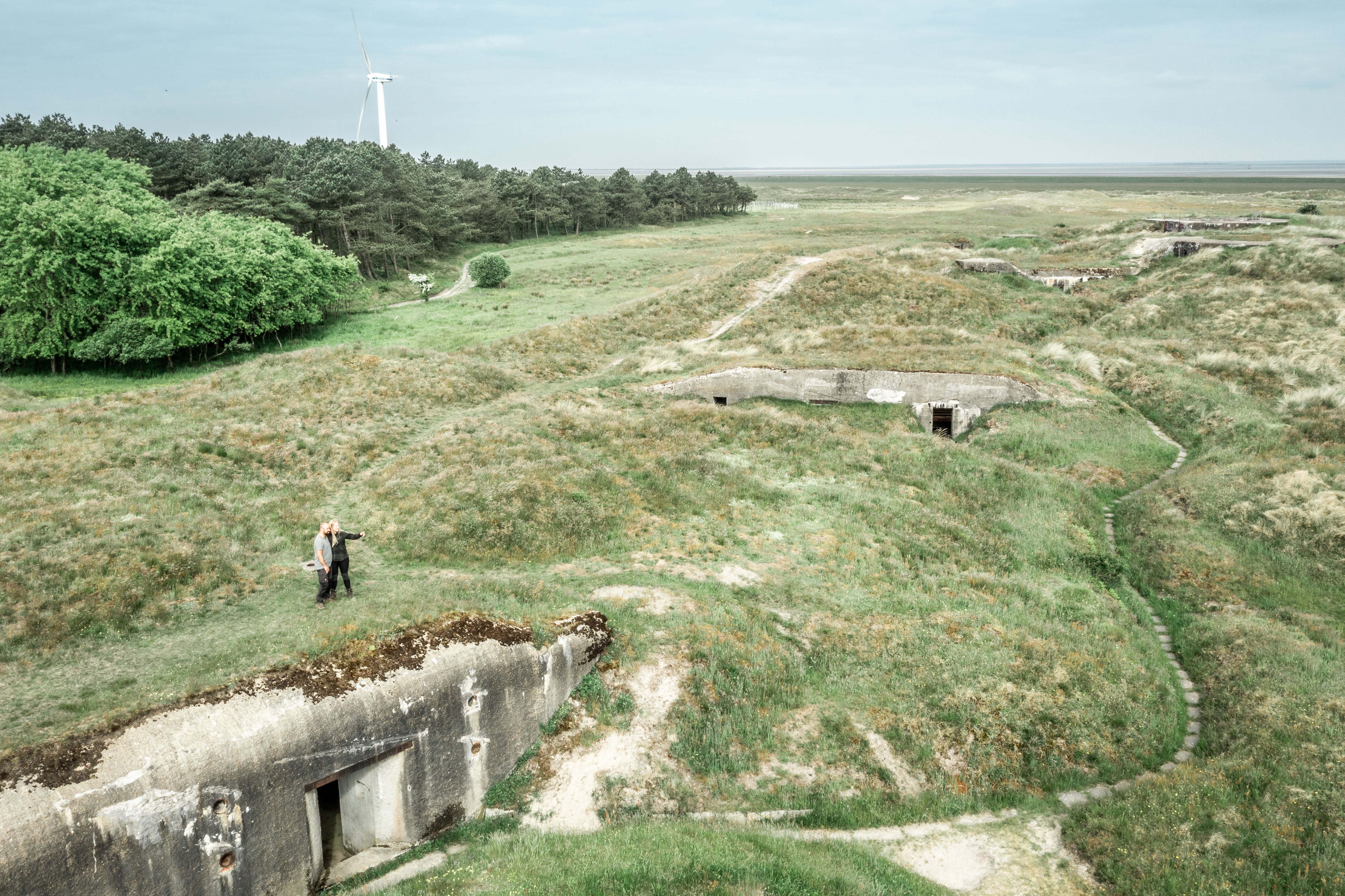The Atlantic Wall on Fanø
Denmark was occupied by the German forces from 9th April 1940 until 5th of May 1945 (Bornholm was freed in 1946). The occupation took place without any major acts of war in the country, and was mainly a step in the plan towards conquering the strategically important Norway as well as to control the sail routes going into the Baltic Sea.
The establishment of the enormous defensive system along the entirety of Europe's coast was sped up in order to prevent the coming invasion from allied troops (the UK, Canada and the US). In Denmark this system was especially focused around Hanstholm and Esbjerg as these were considered the most strategically important areas to defend. As a result a larger number of defensive buildings and measurements were constructed around these harbours. From December 1942 until the end of the war, approximately 1300 bunkers were constructed between Ringkøbing Fjord and Ribe.
Due to Fanø's placement at the entrance water way to Esbjerg harbour, around 300 bunkers, concrete roads, canons, railroads, anti-armoured vehicle trenches, personnel buildings and more were established. These were mainly placed on the northern and middle part of the island. The fortress strategy consisted of a larger amount of coastal- and air batteries from Pælebjerg (the Pælebjerg position) towards north at the Western Sea-battery and the Grådyb-battery, as well as the Anti-marine Battery North position (located north of Nordby). In addition to this, coastal defence positions, radar stations and barracks for the troops were built to the west. Furthermore, some 49000 mines as well as large marine minefields were laid out to the west. The German occupational force on Fanø consisted of around 2300 soldiers and of 1275 Danish workers who aided in building the bunkers.
Denmark and Fanø remained a relatively peaceful place to be during the entire war. However, the anti-air batteries whose intended use were to fire at enemy air crafts, came into use multiple times. One such notable time was on the 27th of August 1944 during a day-attack on the military airport by Esbjerg. On this day, 5 allied aircrafts were shot down.
Many of the Atlantic Wall bunkers have been partly or wholly hidden under the sand today, and have as such became part of the dune landscape. A few of the bunkers in the area between Rindby Strand and Sønderho are still fully exposed and free from the dunes on the beach and can be observed up close. Among these bunkers is the well-known "Be Free" bunker, which has been painted with graffiti. A visit to the positions on Halen is definitely also worth taking the time to do. The best place to get up close to the bunkers is at the Fanø North position. This is also where the organisation "Fanø in the Atlantic Wall" has their weekly tours around the bunkers. Please be aware that the area is privately owned and that the position is located in a fragile natural area, therefore we kindly ask that respect is given to these facts. Riding a bike or walking out there on the gravel road, Vesternasen, is entirely possible and recommended!
